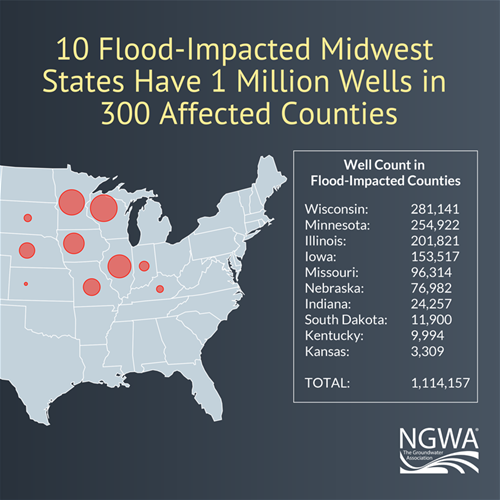After floods in the Midwest following the “bomb cyclone” winter storm, the National Groundwater Association (NGWA) showed that up to 1.1 million private wells could be impacted by contaminated water. Wells situated in broad, sand and gravel valleys and gently rolling countryside could be standing in water for several days, raising the potential for contamination if the wells aren’t properly maintained.
Exposure to E. coli, coliform, and other pathogenic microbes from human and animal fecal matter in floodwaters is a common health concern following a major flooding event. Floodwater can also carry other contaminants.
“Although the ground is frozen in March in most of this vast, productive agricultural region, wells can still be vulnerable,” said Chuck Job, NGWA regulatory affairs manager who compiled the data. “Even slight flooding around a well can potentially carry contaminated water to the wellhead, and if the wellhead is cracked or faulty in any way, the well and water system could be compromised.”
This is a great reminder to make sure your well is working properly and to schedule your next well inspection by a certified contractor. If you have questions about flooding and your well, NGWA has resources to assist you on the Wellowner.org flooding resources page.

